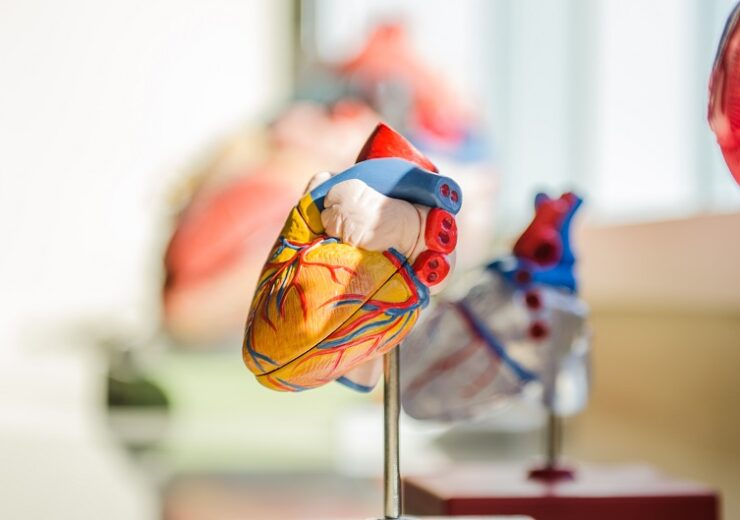The device is intended for use in percutaneous transluminal angioplasty, following appropriate vessel preparation, for treating de novo or restenotic lesions that are 180 mm or less in length

The approval allows Surmodics to market and distribute the SurVeil DCB to physicians in US. (Credit: jesse orrico on Unsplash)
Surmodics, a provider of healthcare solutions for medical device and in vitro diagnostic technologies, has announced that its SurVeil drug-coated balloon (DCB) has received approval from the US Food and Drug Administration (FDA).
The regulatory clearance allows Surmodics to market and distribute the SurVeil DCB to physicians in the US. The device is intended for use in percutaneous transluminal angioplasty, following appropriate vessel preparation, for treating de novo or restenotic lesions that are 180 mm or less in length.
The SurVeil DCB is designed specifically for femoral and popliteal arteries, with reference vessel diameters ranging from 4mm to 7mm. It is worth noting that the SurVeil DCB already obtained CE Mark Certification in the European Union back in June 2020.
Surmodics president and CEO Gary Maharaj said: “Obtaining FDA approval for our SurVeil DCB is one of the most important achievements in Surmodics’ history.
“It represents a major milestone in our efforts to develop next-generation products to help millions of people affected by peripheral artery disease and the physicians that treat them. I would like to thank our internal SurVeil DCB team and our external advisors, investigators and partners for their multi-year efforts to make this achievement possible.”
Abbott has secured exclusive global commercialisation rights for the SurVeil drug-coated balloon (DCB), while Surmodics will handle the manufacturing and supply of the product. Under the agreement, Surmodics will generate revenue from the sale of the SurVeil DCB to Abbott, as well as a portion of the profits from Abbott’s third-party sales.
Additionally, Surmodics is set to receive a milestone payment of $27 million from Abbott. It is anticipated that the company will recognize approximately $24.0 to $24.5 million in revenue associated with this milestone payment during the third quarter of its fiscal year 2023.
Maharaj continued: “Building on our recent progress, Surmodics remains focused on supporting Abbott and its exclusive worldwide commercialization rights for the SurVeil DCB. We’ll discuss details on the developments and update our fiscal year 2023 financial guidance during our third quarter earnings call.”
TRANSCEND clinical trial co-principal investigator Kenneth Rosenfield said: “The Surveil DCB is the next generation DCB as established by results from the TRANSCEND trial which is the only head-to-head pivotal study that has been conducted vs the market-leading DCB. The Surveil DCB successfully demonstrated non-inferior safety and effectiveness at two years post-treatment with a substantially lower drug dose.”
Summary of SurVeil DCB TRANSCEND Trial results:
The results of a 24-month clinical trial have demonstrated the sustained durability of the SurVeil drug-coated balloon (DCB) in terms of safety and efficacy. The trial showed that the SurVeil DCB remained non-inferior to the IN.PACT Admiral DCB, despite utilizing a significantly lower drug dose.
Here are the key findings at the 24-month mark:
- 8% of subjects treated with the SurVeil DCB achieved the secondary safety endpoint. This endpoint was a combination of freedom from device- and procedure-related death within 30 days post-index procedure, freedom from major target limb amputation (above the ankle), and clinically driven target vessel revascularization (CD-TVR). In comparison, 83.2% of subjects treated with the IN.PACT Admiral DCB met the same safety endpoint.
- Both treatment groups had less than 15% of patients requiring repeat revascularization procedures. Only one patient in the IN.PACT group required major leg amputation.
- The primary patency rate for subjects treated with the SurVeil DCB was 70.8%, while it was 70.4% for those treated with the IN.PACT Admiral DCB.
Both the SurVeil and IN.PACT Admiral drug-coated balloons (DCBs) incorporate paclitaxel as the drug coating. However, there is a notable difference in the amount of paclitaxel utilized by each DCB. The IN.PACT Admiral DCB has a higher drug load, with 3.5 µg/mm² of paclitaxel, which is 75% more compared to the SurVeil DCB’s drug load of 2.0 µg/mm².
The SurVeil DCB is specifically designed to address certain shortcomings associated with drug-coated balloons. Its design aims to achieve a more uniform distribution of the drug, enhance the efficiency of drug transfer, and minimise the occurrence of downstream particulates and emboli. These design features of the SurVeil DCB contribute to its improved performance and safety profile in terms of drug delivery.
